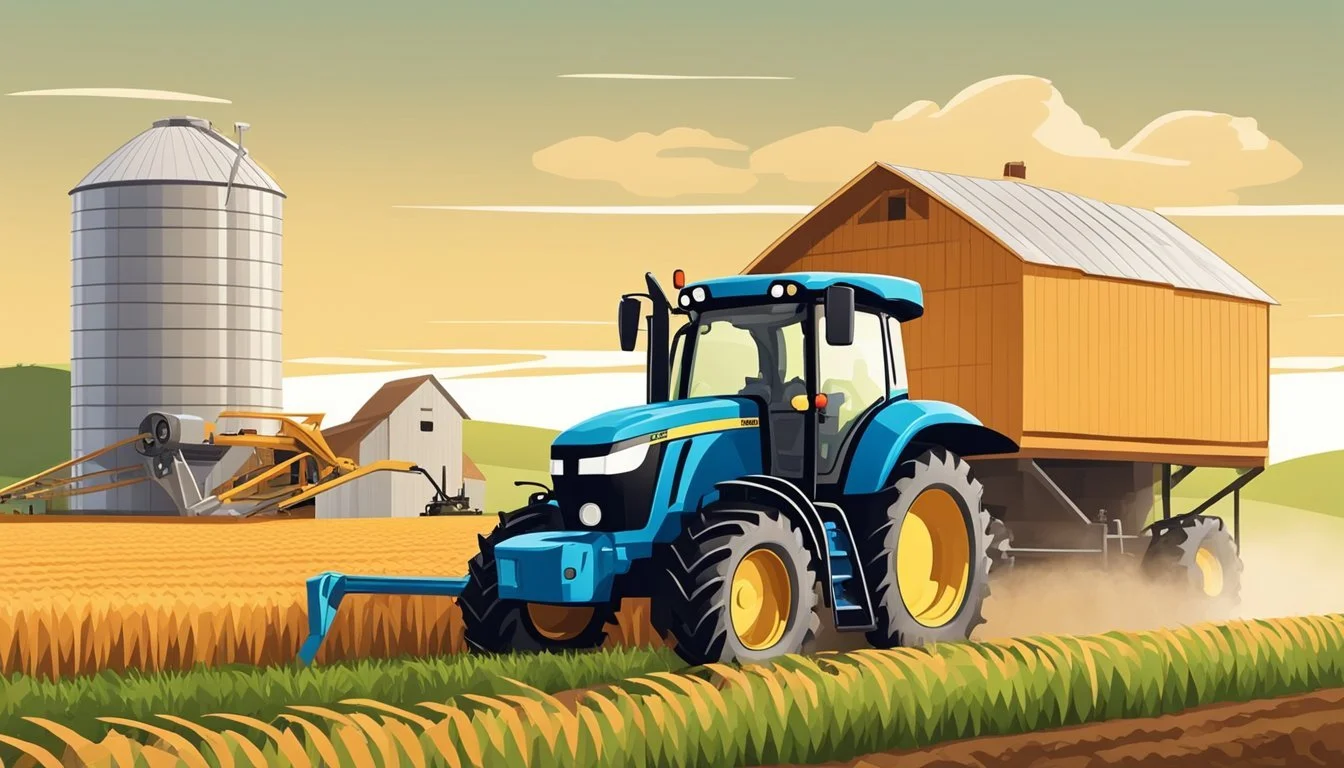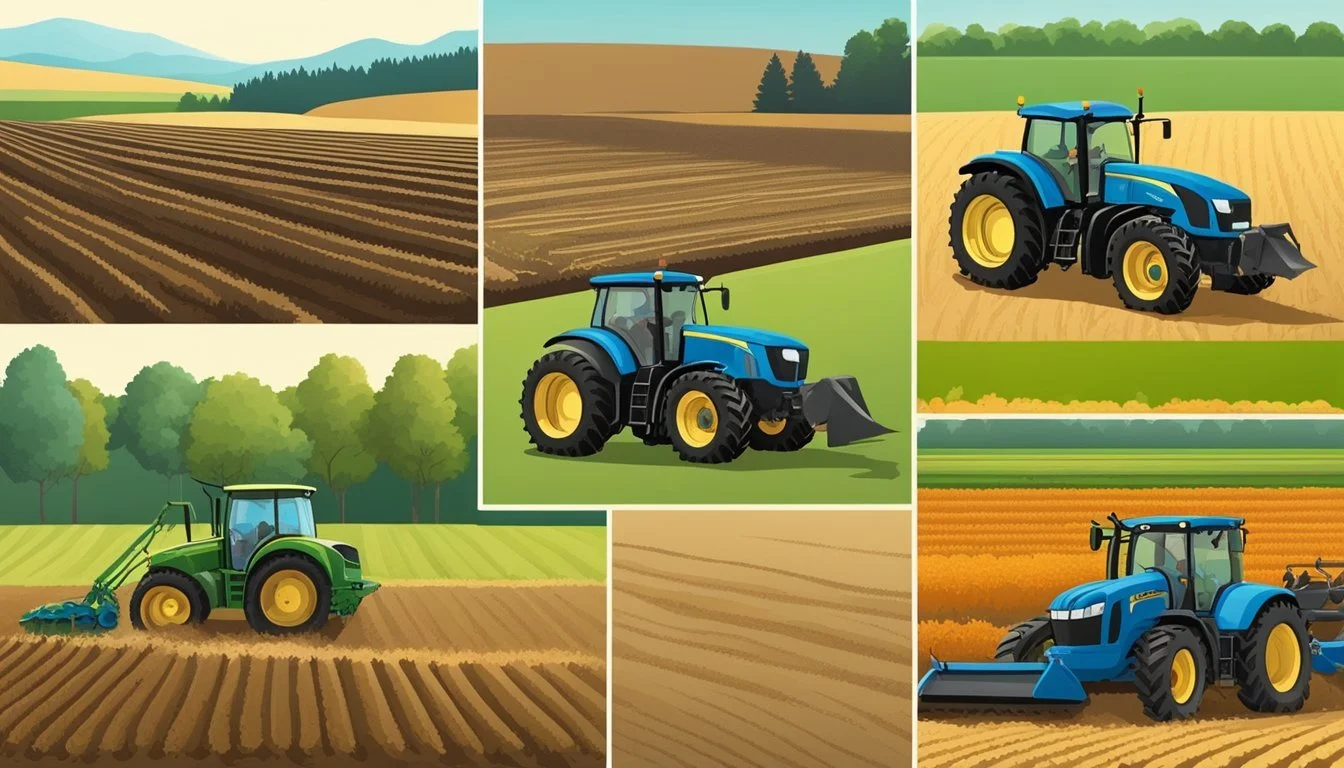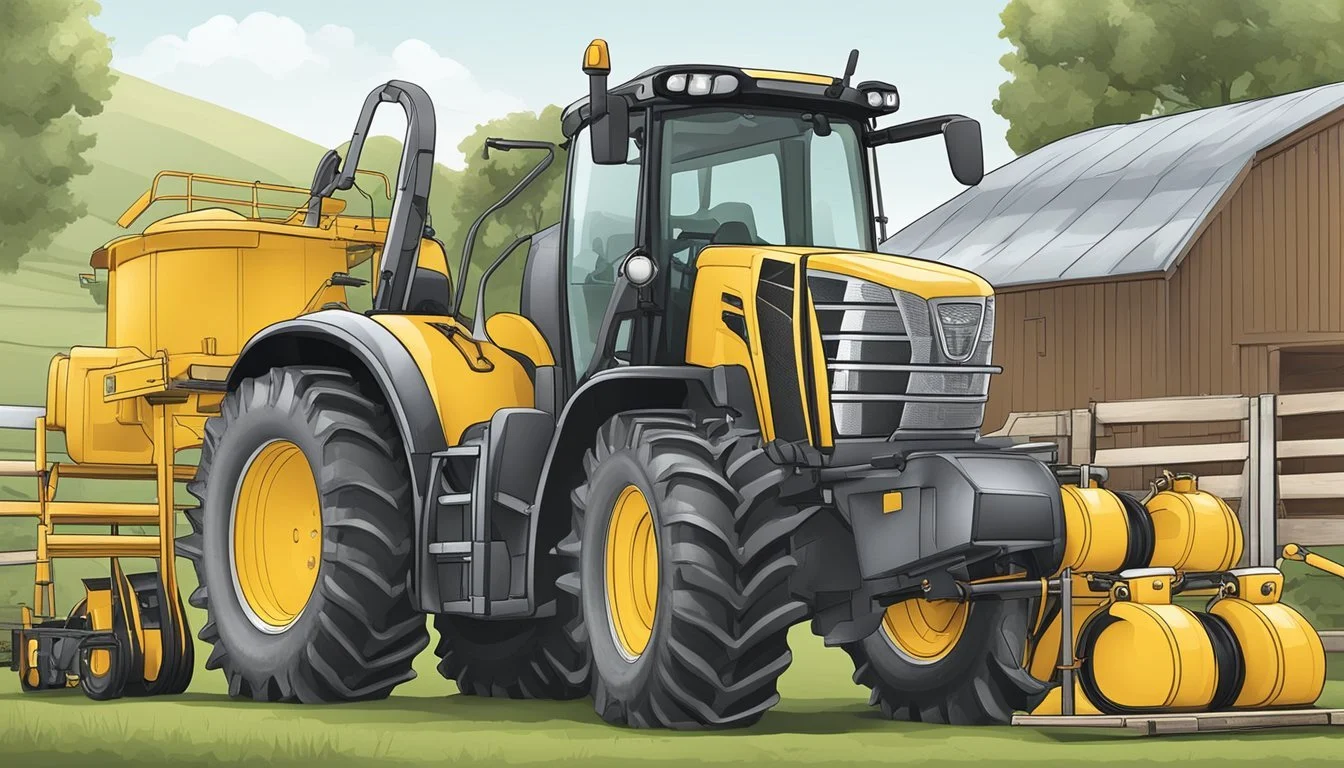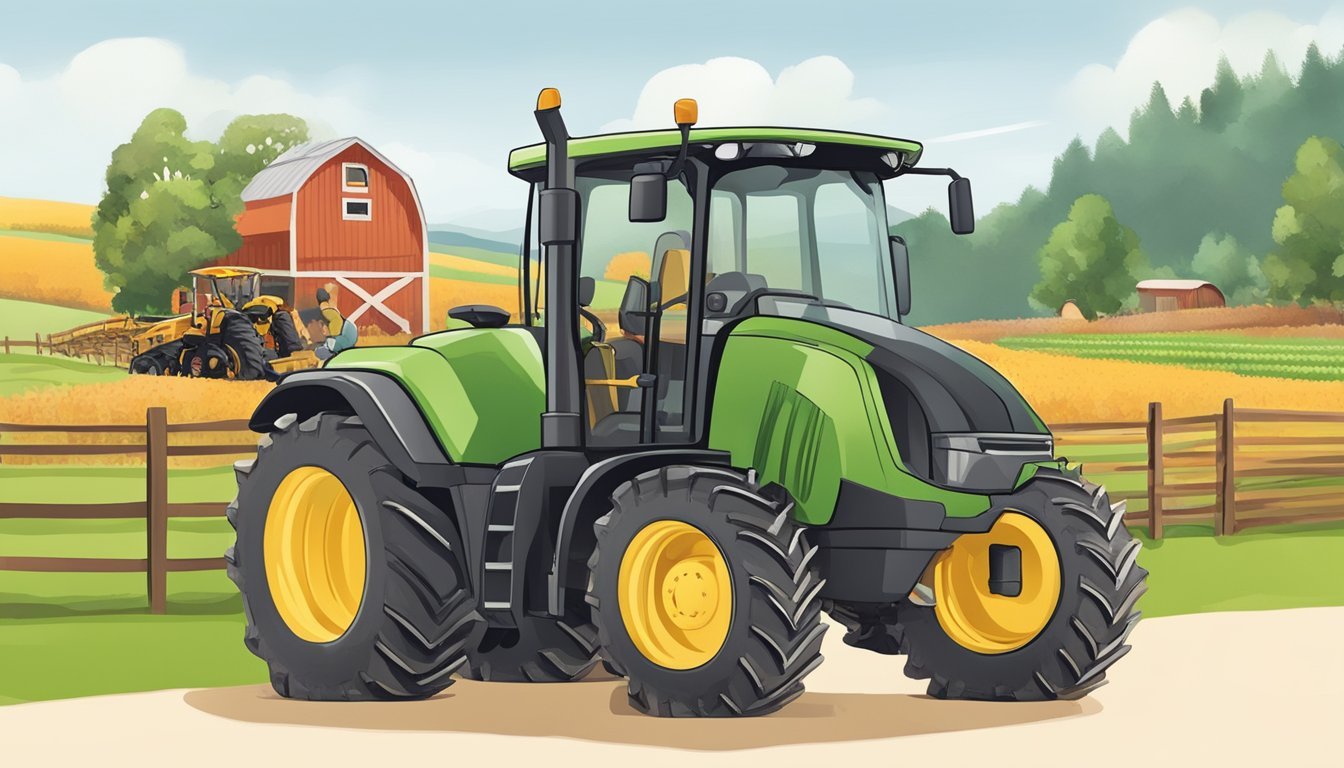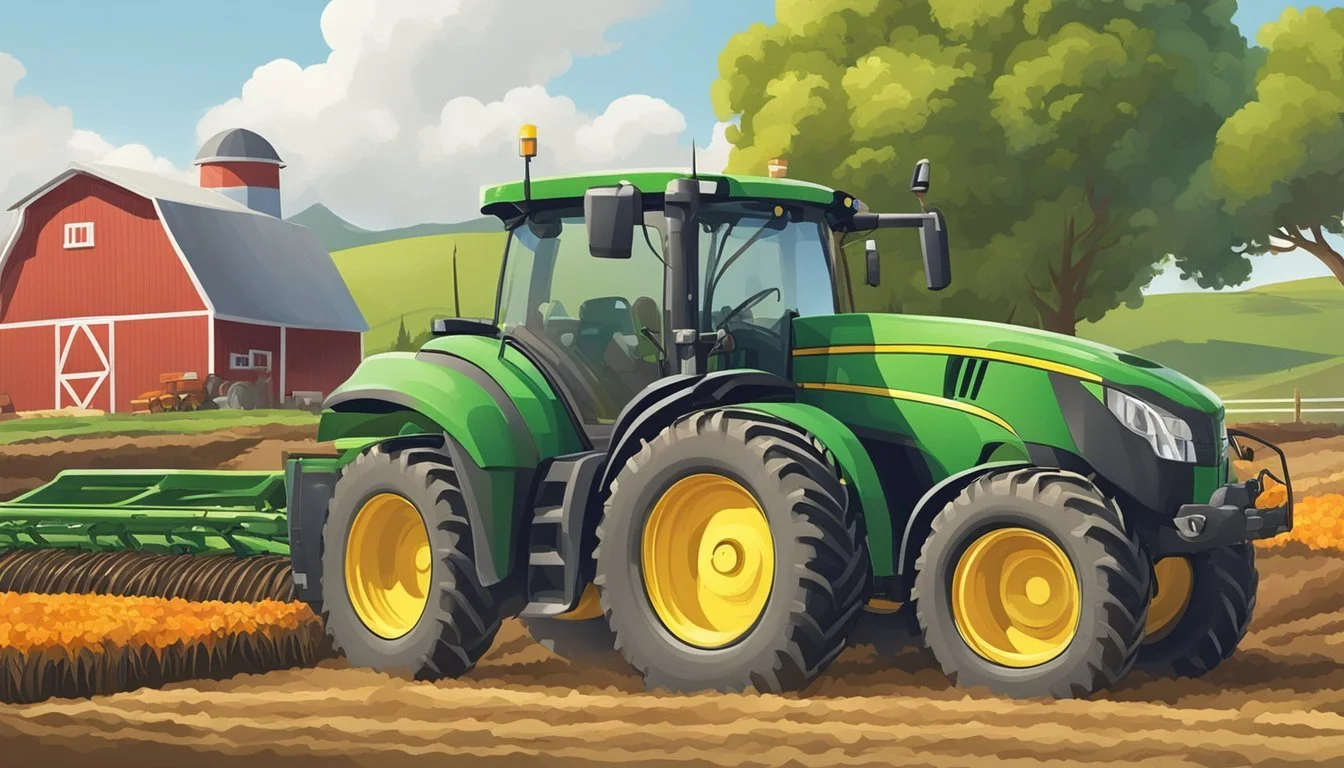Farm Equipment for Beginners
A Comprehensive Starter Guide
As a beginner farmer, entering the world of agriculture can be both exciting and overwhelming. One crucial factor for success in this field is the proper selection and use of farm equipment. Understanding the basic types of machinery and their functions can be a great starting point for building a strong foundation in agriculture.
Farm equipment plays a vital role in modern farming practices, enhancing efficiency, reducing manual labor, and ensuring better yield. For those new to farming, it is important to invest in essential machines and tools that are designed to make tasks more manageable and accurate. Compact tractors are one of the most versatile and useful pieces of farm equipment, as they can handle a wide range of tasks such as tilling, plowing, and mowing. Other important farming tools include belly-mounted mowers, farm trucks, and cover crop seeders. By familiarizing oneself with various pieces of farm equipment, a novice can make informed decisions and ultimately optimize their farm tasks. This is especially important for hobby farms and horse farms, where having the right farming tools can make a big difference in the success of the operation.
In the following sections, we will delve into the key aspects of different types of farm equipment that beginners should be aware of. From tractors and their attachments to irrigation systems and harvesting machinery, we will provide an overview of the essential gear that forms the backbone of a well-functioning farm. This knowledge will help beginner farmers navigate their way through the vast array of options available, helping them build a productive and sustainable agricultural enterprise.
Understanding Farm Equipment Basics
Understanding farm equipment basics is crucial for anyone involved in the agriculture business. The Drum mower, grooming mower, pull-behind mower, and push-behind mower, are various types of farm equipment designed to make tasks more efficient and accurate. Additionally, parallel-bar rakes can be used to gather hay and crop growth effectively.
Proper maintenance of equipment, such as ensuring sharp blades and curved blades, can greatly increase the longevity and effectiveness of farm tools. Furthermore, a compost pile and compost tea are essential for plant growth, and proper application can increase crop yield.
Farm equipment is essential for the smooth operations and increased efficiency of any agricultural work. This section will provide an overview of the most basic and essential tools and machines for any beginning farmer.
Essential Tools and Machines
1. Hand Tools
Before diving into the world of motorized machinery, beginner farmers need to know the essential hand tools that can supplement the work of larger machines. Some fundamental hand tools are:
Shovels for digging and scooping
Hoes for cultivating and breaking up soil
Rakes for clearing debris and smoothing the soil
Pruners for trimming plants and trees
Pitchforks for lifting and turning materials like hay
2. Tractors
Tractors are the workhorses of the farm, used for a wide variety of tasks including plowing, towing, and powering other farm equipment. When selecting a tractor, consider the following factors:
Horsepower: Choose a tractor with the right amount of power for the size of your farm and the tasks you will be performing.
Fuel type: Tractors can run on gasoline or diesel, with diesel being more fuel-efficient but potentially more expensive to maintain.
Transmission: Different types of transmissions are available, including manual, automatic, and hydrostatic. Choose the one that best suits your needs and comfort level.
Tillage equipment is used to work the soil in preparation for planting. Some common types of tillage equipment include:
Plows: Used for turning over the soil and breaking up compacted layers
Discs: These circular blades cut through soil and vegetation, breaking up clods and smoothing the ground
Cultivators: Used to loosen soil, mix organic matter, and break up weeds
4. Planting Machines
Planting machines come in various types and sizes, depending on the crop you're planting. Some standard planting machines are:
Seed drills: A tractor-pulled machine that plants seeds in rows at a consistent depth, improving germination rates
Transplanters: These machines plant seedlings instead of seeds, particularly useful for certain crops like tomatoes and onions
Broadcast spreaders: Used to disperse seeds, fertilizer, or other granular materials evenly across the soil surface
Taking the time to familiarize yourself with the basics of farm equipment will make it easier for you to choose the right tools for your agricultural needs, leading to a more efficient and productive farm operation.
Planning Your Farm Layout
Land Utilization
When planning your farm layout, it is essential to take into account the size and characteristics of your land to maximize efficiency and productivity. Start by analyzing your soil quality, topography, and water resources. These factors will significantly impact the types of crops, livestock, and other farming activities you can successfully pursue. For example, if you have a large farm, you might want to consider investing in a broadcast seeder to cover more ground quickly. You may also need to install sturdy fence posts to protect your crops and livestock from bad weather or wild animals.
Additionally, multipurpose tools with a range of attachments can be beneficial for handling bulky or heavy items, such as electric fence components or broadcast spreaders. Finally, planting seeds and maintaining crops may require the use of various pieces of equipment, so it's important to do your research and invest in the right tools for the job.
Consider dividing your land into zones based on its characteristics. For instance, you can have:
Zone 1: Areas with fertile soil and easy access to water sources are ideal for crop production.
Zone 2: Areas with steeper slopes or less fertile soil suitable for grazing livestock or planting fruit trees.
Zone 3: Land with poor soil quality or other limitations can be utilized for storage, machinery, or farm infrastructure.
Creating a detailed map of your property, including fences, roads, and water features, will help you visualize your farm layout and make well-informed decisions.
Crop and Livestock Areas
Once you have evaluated your land's potential, you can decide the optimal locations for crops and livestock. Consider the following aspects when planning the layout of these critical farm areas:
Crop Rotation: Plan your fields in a way that allows for crop rotation, which is vital in maintaining soil fertility and preventing disease. You can create a simple table to illustrate your rotation plan:
Year 1:
Crop A
Crop B
Crop C
Year 2:
Crop B
Crop C
Crop A
Year 3:
Crop C
Crop A
Crop B
Accessibility: Ensure that fields and livestock areas are accessible by roads or paths, linking them to the farm's main buildings for easy transportation of equipment, feed, and harvested products.
Livestock Shelter: Locate livestock areas near sheltered spots to protect animals from extreme weather conditions and provide them access to water sources and grazing areas.
Buffer Zones: Include buffer zones between crops and livestock to prevent cross-contamination and to ensure biosecurity measures are implemented.
By considering these factors and carefully designing your farm layout, you can make efficient use of your land while maintaining a sustainable and productive agricultural venture.
Selecting Equipment for Your Scale of Farming
When selecting farming equipment, it's vital to match it with the scale of your operations. The requirements for small-scale farming differ significantly from those of large-scale operations, necessitating a precise evaluation of your equipment needs. This evaluation should take into account the handling of bulky items and consider specialized tools like a Post Hole Digger for specific tasks to ensure efficiency in your farming endeavors.
Small-Scale Farm Needs
Small-scale farming typically involves managing a few acres of land and has specific equipment requirements. Essential tools include:
Hand tools: trowels, pruning shears, shovels
Smaller machinery: push mowers, walk-behind tractors
Accessories: hoses, carts, containers
When investing in equipment for small-scale operations, try to prioritize quality over quantity. Opting for well-maintained, lightly used machinery can help you save costs without compromising the longevity of the tools.
Large-Scale Farm Operations
Operating a large-scale farm comes with a higher demand for professional-grade machinery to manage numerous acres of land more efficiently. Key equipment choices include:
Tractors:
Function: Used for towing, grading, tilling, and planting, tractors are versatile machines essential for a variety of tasks on a farm.
Combine Harvesters:
Function: These machines are specialized for harvesting and threshing crops efficiently in one go.
Sprayers:
Function: Sprayers are equipment designed for applying pesticides, herbicides, and fertilizers to crops.
Balers:
Function: Balers are used to compact hay, straw, and silage into manageable bales for transport and storage.
Plows:
Function: Plows are utilized for breaking and turning over the soil to prepare a fresh seedbed.
When dealing with larger operations, investing in highly durable, versatile, and efficient machines is essential for enhanced productivity. Partner with reputable dealers to obtain the best equipment and financing options to suit your farm's needs.
Remember, your farm's unique needs and scale should be the key factors informing your decision-making process when selecting farming equipment. Tailoring your choices to fit your specific situation will lay the foundation for successful operations.
Acquiring Your Equipment: Buy, Rent, or Lease
Cost-Effective Strategies
When starting a farm, it's essential to carefully consider your budget to determine the most cost-effective approach to acquiring equipment. There are three primary options: buying, renting, or leasing.
Buy: Purchasing equipment outright can be beneficial if you have the necessary funds and expect to use the equipment frequently. It allows you to build equity and may provide tax advantages like depreciation deductions. However, the initial investment can be substantial.
Rent: Renting equipment on a short-term basis can be a budget-friendly way to access machinery when you need it without the commitment of ownership. It is ideal for occasional use or seasonal needs. Keep in mind that, over time, rental fees can add up.
Lease: Leasing equipment provides a middle ground between buying and renting. It requires a smaller upfront investment and often includes maintenance services. Plus, you have the option to buy the equipment at the end of the lease term.
Here's a comparison of the different methods of acquiring equipment or property, along with associated considerations:
Buy:
Upfront Cost: High
Ownership: Yes
Maintenance: Owner's Responsibility
Rent:
Upfront Cost: Low
Ownership: No
Maintenance: Lessor's Responsibility
Lease:
Upfront Cost: Medium
Ownership: Possible Option
Maintenance: Lessor's Responsibility
Evaluating Equipment Needs
The decision to buy, rent, or lease depends on your specific equipment needs. Carefully assess the following factors to make an informed choice:
Farm Size: Large operations may require more equipment, increasing the value of ownership as the machinery will be used more frequently.
Type of Equipment: High-demand, specialized equipment may be more challenging to rent, making buying or leasing a better option.
Frequency of Use: For tools and machinery used throughout the year, buying or leasing may be more cost-effective than renting.
Maintenance Costs: Purchasing used equipment may result in higher maintenance costs. In this case, leasing could be a more suitable option, as maintenance is typically included in the lease agreement.
Growth potential: Determine if your farm is likely to expand in the future. If it is, investing in buying equipment or leasing might prove beneficial in the long run.
Understanding your farm's requirements and financial constraints is crucial in deciding whether to buy, rent, or lease your farm equipment. Weigh the pros and cons of each option before deciding to ensure you make the most cost-effective choice for your operation.
Essential Farm Equipment for Beginners
Tractors and Attachments
When starting a farm, one of the first and most important investments is a tractor. Tractors are versatile and powerful machines, essential for numerous tasks on a farm. When choosing a tractor, consider factors such as horsepower (hp) and ease of control. For beginners, a smaller tractor between 20-45 hp is often a suitable choice. These smaller tractors are affordable, easy to maneuver, and have sufficient power for most tasks.
Another essential aspect of tractors is their attachments, which extend their functionality. Here are some crucial attachments for beginning farmers:
Cultivator: A cultivator is an essential attachment for preparing the soil before planting crops. They help break up the soil, remove weeds, and improve overall soil quality.
Plow: Plows are used for turning soil to create furrows in fields, which allows for easy planting of seeds and improves the soil's ability to absorb water.
Loader: A loader attachment is indispensable for lifting and moving various materials, such as dirt, hay, or manure.
Here's a brief overview of different types of agricultural attachments and their functions:
Cultivator:
Function: Used for soil preparation by stirring and pulverizing the soil before planting.
Plow:
Function: Designed to create furrows in the soil, turning it over to prepare for sowing seeds.
Loader:
Function: An attachment that lifts and moves materials, such as soil, manure, or harvest products.
Irrigation Systems
Proper irrigation is crucial for maintaining healthy crops and maximizing yields. Beginners should consider investing in a reliable and efficient irrigation system early on. There are several types of irrigation systems to choose from, depending on your farm size, crop types, and water availability. Here are some popular options:
Drip irrigation: This system delivers water directly to the roots of each plant through drip lines, ensuring efficient water use. It is best suited for smaller farms and gardens.
Sprinkler systems: These systems distribute water through a network of pipes and sprinklers. Sprinkler systems are versatile and work well for medium to larger-sized farms with various crop types.
Flood irrigation: Flood irrigation involves flooding the fields with water to distribute moisture evenly. This method is less efficient but suitable for larger farms with access to the vast water supply.
Note: Regardless of the chosen system, be sure to establish a reliable water source and consider any local regulations related to water usage.
Maintaining and Storing Farm Equipment
Regular Maintenance
Proper maintenance is essential for ensuring the longevity and efficiency of your farm equipment. Follow these simple tips to keep your machinery in optimal condition:
Check the manual: Always refer to the manufacturer's guidelines and maintenance schedules for each piece of equipment.
Regular inspections: Perform routine checks on your machinery, paying attention to any wear and tear, corrosion, or damaged components.
Clean and lubricate: Keep equipment clean and well-lubricated to reduce friction and prevent the build-up of dust, dirt, and debris.
Replace filters and fluids: Regularly change air, fuel, and oil filters, and use recommended fluids and lubricants.
Maintain tires and tracks: Check for wear, proper inflation, and alignment, and service tracks as needed.
Here's a maintenance frequency guide for various components of agricultural machinery:
Filters:
Maintenance Frequency: Follow the recommendations provided in the equipment's manual.
Fluids:
Maintenance Frequency: Check and replace or refill as recommended in the equipment's manual.
Tires:
Maintenance Frequency: Inspect and maintain monthly or as needed, depending on usage and wear.
Tracks:
Maintenance Frequency: Service as needed or perform annual maintenance to ensure proper function.
Proper Storage Solutions
Storing farm equipment properly is crucial to protect it from harsh weather conditions, pests, and potential damage. Here are some guidelines for adequate storage:
Indoor storage: Store your machinery in a well-ventilated, dry, and secure building, if possible. Invest in a barn or large shed to protect against the elements.
Outdoor storage: If indoor storage is not feasible, invest in durable, waterproof covers to shield machinery from rain and sunlight. Secure equipment with wheel locks or other security measures to prevent theft.
Organize equipment: Arrange and label machinery according to use and frequency, ensuring that frequently used items are easily accessible.
Pest control: Routinely inspect storage areas for pests, such as rodents or insects, and take necessary precautions to keep them at bay.
Fire safety: Keep fire extinguishers and smoke detectors in storage areas and implement a strict no-smoking policy.
By adhering to these regular maintenance and storage guidelines, you can extend the life of your farm equipment, reduce the need for repairs, and maximize its efficiency for years to come.
Farming Techniques and Equipment Use
Tillage Operations
Tillage operations are important for preparing the soil for planting and promoting healthy plant growth. These operations can be classified into primary and secondary tillage. Primary tillage, such as plowing, helps to break up and loosen the soil, reduce compaction, and bury crop residues. Secondary tillage focuses on refining the soil bed and includes harrowing and cultivating.
Plowing: This technique turns over the upper layer of soil, burying crop residues and organic matter. Common equipment used includes the moldboard plow, disc plow, and chisel plow.
Harrowing: Implements like disc harrows, tine harrows, and spike-tooth harrows break up clods and level the soil after plowing.
Cultivating: Equipment such as field cultivators and rotary tillers are used for breaking up the soil surface and creating a fine seedbed.
Harvesting Methods
Efficient harvesting methods contribute to greater yield and reduced grain loss. Harvesting techniques vary depending on the type of crop being harvested.
Grain Harvesting: Combine harvesters are widely used for harvesting grain crops like wheat, rice, and corn. These machines are highly efficient as they combine three operations - cutting, threshing, and separating - into one action.
Forage Harvesting: Forage crops such as grass, legumes, and corn can be harvested using forage harvesters. These machines cut and process the crops into silage, which is stored in silos for use as feed for livestock.
Root Crop Harvesting: Root crops like potatoes and carrots require specialized equipment, such as potato harvesters and carrot harvesters, to extract the crops from the soil without causing damage.
Here's a list of crop types matched with their appropriate harvesting equipment:
Grain:
Harvesting Equipment: Combine Harvester, which reaps, threshes, and winnows the grain crops.
Forage:
Harvesting Equipment: Forage Harvester, used for cutting and chopping of silage crops.
Root:
Harvesting Equipment: Potato/Carrot Harvester, specialized machinery for digging, lifting, and collecting root vegetables.
By understanding the different techniques and equipment used in farming operations, beginners can make informed decisions to increase efficiency in soil preparation and harvesting. Knowledge of tillage operations and harvesting methods will set the foundation for successful farming practices.
Safety and Operational Training
Equipment Handling Safety
In the agricultural industry, safety is of utmost importance. Farm equipment can be dangerous if not handled properly. All workers need to receive comprehensive training to minimize the risk of accidents. A few key safety measures include:
Regular inspection: Ensure that equipment is well-maintained and functioning properly. Check for any signs of wear and tear or malfunction, and address them promptly.
Use of protective gear: Operators should wear appropriate protective equipment such as safety glasses, gloves, and ear protection while working with machinery.
Avoiding loose clothing: Loose clothing or accessories can get caught in moving parts, posing a hazard. Ensure all workers wear well-fitted clothing and secure any loose items.
It is crucial to remember that no amount of safety equipment can substitute for proper training and experience in using farm machinery.
Onboarding for Farm Workers
Farm workers should undergo a systematic onboarding process before they begin operating machinery. This ensures they have the necessary experience and training to handle equipment safely. The onboarding process usually entails the following steps:
Orientation: Introduce new workers to the farm environment, safety protocols, and the tasks they will be expected to perform.
Hands-on training: Provide extensive hands-on instruction on the correct operation of each piece of equipment.
Assessment: Assess workers' understanding and practical skills by observing them perform required tasks with the machinery.
Shadowing: Allow new workers to shadow experienced operators before they operate a machine independently.
Continuous learning: Encourage workers to participate in ongoing training to further develop their skills and stay informed about new technologies and safety advancements.
By implementing these measures, farms can create a safe environment for workers and ensure that operations run efficiently.
Managing Costs and Maximizing Efficiency
Budget Optimization
Creating a well-thought-out budget is crucial for novice farmers who want to manage costs and increase efficiency. A budget allows you to plan and make strategic financial decisions in advance. To develop a cost-effective budget, consider the following steps:
Define your goals: Determine your short-term and long-term objectives, such as purchasing equipment or expanding the farm.
List expenses: Itemize all expected costs, including equipment repairs, maintenance, fuel, and storage fees.
Estimate revenue: Calculate your potential income based on crop yields and market prices.
Prioritize investments: Allocate funds to the most important areas, such as essential machinery.
Monitor and adjust: Regularly review your budget to track progress and adjust as needed when unforeseen circumstances arise.
Efficiency Improvement Strategies
Implementing efficiency improvement strategies can significantly impact farm productivity. Here are a few techniques to consider:
Regular maintenance: Keeping farm equipment in good working condition through proper maintenance reduces the likelihood of breakdowns and increases overall efficiency.
Optimize equipment usage: Combine tasks where possible and reduce idle time to make the most of your machinery usage.
Use technology: Implementing modern technologies, like precision agriculture, can improve efficiency by automating repetitive tasks and providing data-driven insights to guide farming decisions.
Workforce training: Invest in training programs to ensure your workers are up-to-date with the latest techniques and technologies, leading to increased productivity.
Managing costs and maximizing efficiency on a farm requires strategic planning, continuous monitoring, smart investment choices, and keeping a focus on efficiency improvement. By following these guidelines, beginner farmers can set themselves up for long-term success in the industry.
Insurance and Protection for Your Equipment
Understanding Farm Insurance
Farm insurance is a crucial aspect for beginners in farm equipment. There are different types of insurance policies available to protect your investment. The most common ones include:
Crop insurance: This type of insurance is designed to protect your crops from natural disasters, diseases, and revenue losses. It is important to consider the coverage level, premium rate, and deductible options when choosing a policy.
Farm loans: These are financial aid options to help you purchase the necessary equipment for your farm. There are two main types of farm loans: Direct Farm Loans and Guaranteed Farm Loans. The former is funded by the government, while the latter is financed by commercial lenders.
Conservation programs: These programs help farmers and landowners implement sustainable practices that conserve soil, water, and other natural resources. Participation in these programs can result in financial incentives.
It is essential to research and compare various insurance providers to make an informed choice. You may seek assistance from experienced farmers or professional farm insurance agents for guidance.
Disaster Assistance Programs
Farm owners must be aware of disaster assistance programs available to protect their assets in case of unforeseen events. These programs offer relief and support to affected farmers. Some of the popular disaster assistance programs include:
Federal Crop Insurance:
Description: Offers compensation for crop losses due to natural disasters such as droughts, floods, and hail.
Noninsured Crop Disaster Assistance (NAP):
Description: Provides financial aid to farmers who grow crops that aren't eligible for traditional insurance, covering losses from natural disasters.
Livestock Forage Disaster Program (LFP):
Description: Assists livestock producers with financial support when they suffer grazing losses due to drought or fire.
Emergency Assistance for Livestock, Honey Bees, and Farm-Raised Fish (ELAP):
Description: Provides emergency relief to farmers who face losses of livestock, honey bees, or farm-raised fish due to natural disasters and adverse conditions.
Despite these programs providing support, having a comprehensive farm insurance plan remains the most secure way of protecting your investment. It ensures that you are prepared for risks and uncertainties associated with farm equipment management.
Navigating Farm Equipment Resources
USDA Programs
The United States Department of Agriculture (USDA) offers various programs and resources for farmers, especially beginners. These programs aim to provide financial assistance, educational opportunities, and technical support to ensure sustainable and efficient farm management.
Some relevant USDA programs for farm equipment acquisition include the Farm Service Agency (FSA) Loans and Environmental Quality Incentives Program (EQIP), which can provide funding for purchasing or leasing equipment. It's essential to research and understand the eligibility requirements and application processes for these programs.
Educational Material and Online Resources
In addition to government programs, many educational materials and online resources can help beginners navigate farm equipment. These resources offer comprehensive information on equipment servicing, operation, and maintenance.
YouTube: YouTube is an excellent platform to find tutorials and demonstrations on using farm equipment. Many channels offer videos showcasing various types of machinery, including tractors, harvesters, and cultivators.
Online Forums and Websites: Joining agricultural communities and forums allows beginners to connect with experienced farmers, ask questions, and gather valuable knowledge. Websites such as AgTalk and TractorByNet offer a wealth of discussions and advice on selecting and using farm equipment.
Extension Services and Agricultural Schools: Many universities and extension services offer resources, workshops, and training on farm equipment usage and maintenance. Contacting your local extension service or agricultural school can connect you with experts and practical training opportunities, helping you become well-versed in managing your farm's equipment.
By exploring these resources and utilizing the available programs, beginners can confidently navigate the world of farm equipment and make informed decisions in selecting and operating machinery to boost their agricultural operations' productivity and efficiency.

